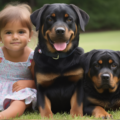28 Aug Wound Care For Dogs: A Step-By-Step Guide
In the world of pet ownership, accidents and injuries can happen. When our furry friends find themselves with a wound, it’s important to know how to provide proper care. That’s where ‘Wound Care for Dogs: A Step-by-Step Guide’ comes in.
This comprehensive article offers a detailed and easy-to-follow approach to treating wounds in dogs. Written in a knowledgeable and precise manner, this guide aims to serve those who are dedicated to the well-being of their canine companions.
Starting with a euphemistic tone, the introduction draws the audience in and keeps them interested in learning more about this important topic.
From assessing the wound to preventing infection, this step-by-step guide covers all the necessary aspects of wound care for dogs.
So, grab a pen and paper, because you’re about to become an expert in keeping your pup healthy and happy.
Assess the Wound
Now, let’s assess your furry friend’s wound to determine the best course of action. Start by carefully examining the wound, noting its size, depth, and location. Look for signs of bleeding, discharge, or any foreign objects embedded in the wound. Check for signs of infection such as redness, swelling, or a foul odor. Seek immediate veterinary attention if the wound is deep or shows signs of infection. For minor and clean wounds, continue with at-home care. Remember to wash your hands thoroughly before and after handling the wound. Clean the wound using a mild antiseptic solution, gently removing debris or dirt. Apply a clean dressing and monitor the wound closely for changes. If the wound worsens or signs of infection develop, consult with a veterinarian. Your furry friend’s well-being is our priority, and proper wound assessment is crucial for their swift recovery.
Clean the Wound
First things first, let’s get that adorable fur baby’s boo-boo all cleaned up! Cleaning the wound is an essential step in the wound healing process. To ensure proper wound care for your furry friend, follow these simple steps:
-
Gently remove any debris or foreign objects from the wound using clean tweezers or your fingers (if you have gloves on).
-
Rinse the wound with lukewarm water to flush out any bacteria or dirt. Avoid using harsh substances like hydrogen peroxide, as they can delay the healing process.
-
Pat the wound dry with a clean, sterile gauze pad or soft towel. Make sure to be gentle to avoid causing any further damage.
-
Apply an appropriate wound care product, such as an antibacterial ointment or a pet-safe wound spray, to protect against infection and promote healing.
-
Cover the cleaned wound with a sterile non-stick dressing or a clean cloth and secure it in place with a bandage or self-adhesive wrap.
Properly cleaning the wound not only helps prevent infection but also creates an optimal environment for the wound healing process to occur.
Remember to consult with your veterinarian for specific wound care products and instructions tailored to your dog’s needs.
Apply Topical Medication
To ensure your fur baby’s boo-boo heals quickly and without complications, it’s essential to apply the topical medication recommended by your veterinarian. Proper wound care is crucial for dog wound healing, and using the right products can make a significant difference in the recovery process. When it comes to applying topical medication, there are a few key steps to follow.
First, gently clean the wound as discussed in the previous subtopic. Once the wound is clean and dry, apply the prescribed topical medication directly to the affected area. Be sure to follow your veterinarian’s instructions regarding the frequency and amount of medication to use.
Topical medications for dog wound care come in various forms, such as ointments, creams, or sprays. These products are designed to provide a protective barrier, promote healing, and prevent infection. They may contain ingredients like antibiotics, antiseptics, or soothing agents to aid in the healing process.
When applying the medication, be gentle and avoid causing any additional discomfort to your furry friend. Use clean hands or gloves to prevent contamination and ensure proper hygiene. If your dog shows signs of pain or discomfort during the application, consult your veterinarian for alternative methods or medications.
Remember, the healing process may take time, and it’s essential to monitor the wound closely for any changes or signs of infection. If you have any concerns or questions, don’t hesitate to reach out to your veterinarian for guidance. By following their recommendations and using the appropriate wound care products, you can help your dog heal effectively and ensure their overall well-being.
Dress the Wound
Once the wound has been cleaned and the topical medication applied, you can carefully dress it with a bandage to protect it from further irritation and promote faster healing. Dressing the wound is an important step in the process of dog wound healing and requires the use of specific wound care products.
To properly dress the wound, follow these steps:
-
Start by selecting a sterile dressing or gauze pad that is appropriate for the size of the wound. This will help to absorb any excess moisture and prevent infection.
-
Place the dressing over the wound, making sure it covers the entire area. Be gentle when applying pressure to avoid causing any discomfort to your dog.
-
Secure the dressing in place with a self-adhesive bandage or medical tape. Make sure it is snug, but not too tight, to allow for proper circulation.
Remember, it is crucial to regularly change the dressing and monitor the wound for any signs of infection or worsening. If you notice any redness, swelling, or discharge, consult your veterinarian immediately.
By following these steps and using appropriate wound care products, you can effectively dress your dog’s wound and aid in the healing process. Taking proper care of your dog’s wounds demonstrates your commitment to their well-being and ensures a speedy recovery.
Monitor for Signs of Infection
When monitoring for signs of infection in a dog’s wound, it’s important to check for redness, swelling, or discharge. These can be indicators of an infected wound that may require further treatment.
Additionally, it’s crucial to look for signs of pain or discomfort in the dog, as this can also be a sign of infection.
By closely monitoring these key points, pet owners can ensure that their dog’s wound is healing properly and seek veterinary care if necessary.
Check for redness, swelling, or discharge
Take a moment to carefully inspect your furry friend’s wound, checking for any signs of redness, swelling, or discharge. These are common indicators of infection and should be monitored closely to prevent further complications.
Redness around the wound may indicate inflammation, while swelling can be a sign of an underlying infection. Discharge, such as pus or blood, may suggest the presence of bacteria or other foreign substances.
If any of these signs are present, it’s important to consult with a veterinarian for further evaluation and treatment. Managing wound healing involves keeping the wound clean and dry, as well as applying appropriate wound care products recommended by your vet.
By regularly monitoring your dog’s wound for redness, swelling, or discharge, you can help promote a healthy healing process and prevent potential infections.
Look for signs of pain or discomfort in your dog
Don’t overlook your furry friend’s feelings – keep an eye out for any signs of pain or discomfort in your pup. It’s important to remember that dogs can’t communicate their pain in the same way humans do, so it’s up to us as responsible pet owners to be vigilant and observant. Here are some signs to look for:
-
Changes in behavior: Is your dog acting differently? Has their energy level decreased or are they more irritable than usual?
-
Limping or favoring a limb: If your dog is limping or avoiding putting weight on a specific leg, it could be a sign of pain.
-
Whining or whimpering: Similar to humans, dogs may vocalize their pain through whining or whimpering.
-
Loss of appetite: If your dog suddenly loses interest in food, it could be a sign that they’re experiencing discomfort.
-
Restlessness: Is your dog having trouble settling down or constantly shifting positions? This could indicate that they’re uncomfortable.
By paying attention to these signs, you can help ensure that your dog receives the proper care and treatment they need to heal and recover.
Prevent Your Dog from Licking or Chewing the Wound
To keep your furry friend from irritating the wound, it’s important to find a way to prevent them from licking or chewing it. Did you know that over 50% of dogs will try to lick or chew their wounds if given the chance? Fortunately, there are effective methods to discourage licking and chewing in dogs.
One way to prevent your dog from licking or chewing the wound is by using protective devices. These devices can include Elizabethan collars, which are cone-shaped collars that prevent your dog from reaching their wound with their mouth. They may seem uncomfortable for your dog at first, but they are highly effective in preventing them from aggravating the wound.
Another method to discourage licking or chewing is by using bitter-tasting sprays or ointments. These products are specifically designed to deter dogs from licking or biting their wounds due to the unpleasant taste. You can apply them directly to the wound or on any bandages or dressings to discourage your dog from tampering with them.
It’s important to monitor your dog closely to ensure they don’t find ways to remove or bypass the protective devices or taste deterrents. If your dog continues to try to lick or chew their wound despite these measures, consult your veterinarian for additional guidance and potential alternatives.
Remember, preventing your dog from licking or chewing their wound is crucial for proper healing and avoiding potential infections.
Follow Up with Your Veterinarian
After implementing preventative measures, it’s crucial to schedule a follow-up appointment with your veterinarian. This ensures proper healing and addresses any concerns. Veterinary advice and guidance are essential during the wound healing process.
Your veterinarian will examine the wound and assess its progress, ensuring that it’s healing as expected. They’ll provide valuable information and instructions on how to continue caring for the wound at home.
The importance of follow-up appointments cannot be overstated. Your veterinarian will monitor the wound closely, looking for signs of infection or complications. They may recommend additional treatments or adjustments to the care plan if necessary. This ongoing support is crucial to ensure proper healing and avoid setbacks.
During the follow-up appointment, don’t hesitate to ask questions or share any concerns. Your veterinarian is there to provide guidance and support, ensuring the best possible outcome for your dog. They may also provide additional tips and techniques to enhance the healing process.
Remember, following up with your veterinarian is an essential part of wound care for dogs. By doing so, you ensure your dog receives necessary veterinary advice and support for their healing journey.








No Comments